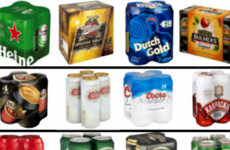WE’RE ALL OUT here trying to do our best for the planet, whether it’s becoming vegetarian, bringing a KeepCup to get coffee or attempting to go plastic-free.
But how much of what we’re doing is actually beneficial in the long run? Companies frequently cod us as to how environmentally sound they are, in a practice more commonly referred to as “green-washing”.
Ok, but what does “green-washing” mean?
Basically, it’s environmental PR spin. It’s companies spending more time and money on looking green rather than being so. Environmentalist Jay Westerveld coined the term in 1986 in a critical essay inspired by the irony of the “save the towel” movement in hotels.
Let’s say a business proudly exclaims across all social media channels that they’re making the switch to recyclable/compostable coffee cups. Neat, right? However, this is only the case if the cups are disposed of via the brown bin – you can’t just toss them in anywhere as they won’t break down unless under the right conditions. (California state law now bans the sale of plastics labeled as “compostable” or “biodegradable,” as environmental officials deemed such claims as misleading without disclaimers about how quickly the product will biodegrade in landfill.)
“We want to feel good about ourselves and we want to believe that we can do something about the environment,” Pratap Chatterjee, executive director of CorpWatch, told Gear Patrol. “So companies try to convince us that by buying their products, we can. But most of the time, ‘environmental sustainability’ and ‘corporate responsibility’ claims are just advertising spin.
They’re a disguise — a false salve for your conscience.”
How to spot greenwashing
Futerra’s 2015 Sustainability Report has a few handy rules for companies and brands to help them avoid greenwashing. Here’s how to spot the signs:
- Fluffy language: Words or terms with no clear meaning (e.g., “eco-friendly”).
- Suggestive pictures: Images that indicate an (unjustified) green impression. You know the way you see flowers blooming from exhaust pipes in car ads? Or mountains and green rolling hills on plastic water bottles? Yeah, that.
- Gobbledygook: Jargon and information that only a scientist could check or understand.
- Irrelevant claims: Emphasising one tiny green attribute when everything else is un-green.
- No proof: It could be right, but where’s the evidence?
Another example that ticks most of these boxes? Boxed water (no pun intended!)
They say 74% of the packaging is made from “well-managed” trees, a “renewable resource.”
What does “well managed” mean, exactly? There’s room to be more specific and transparent here. As for the other 26%? It’s made of petro-plastic, which is not renewable, and poses recycling challenges. In short, boxed water might be the lesser of two evils, but it’s still evil.
This shouldn’t put you off making small changes
We all have to start somewhere when it comes to upholding our end of the environmental bargain, but we should always be looking for better alternatives too. It’s simply a matter of educating yourself on your practices and your product purchases, and looking beyond “the green sheen”.










COMMENTS (3)